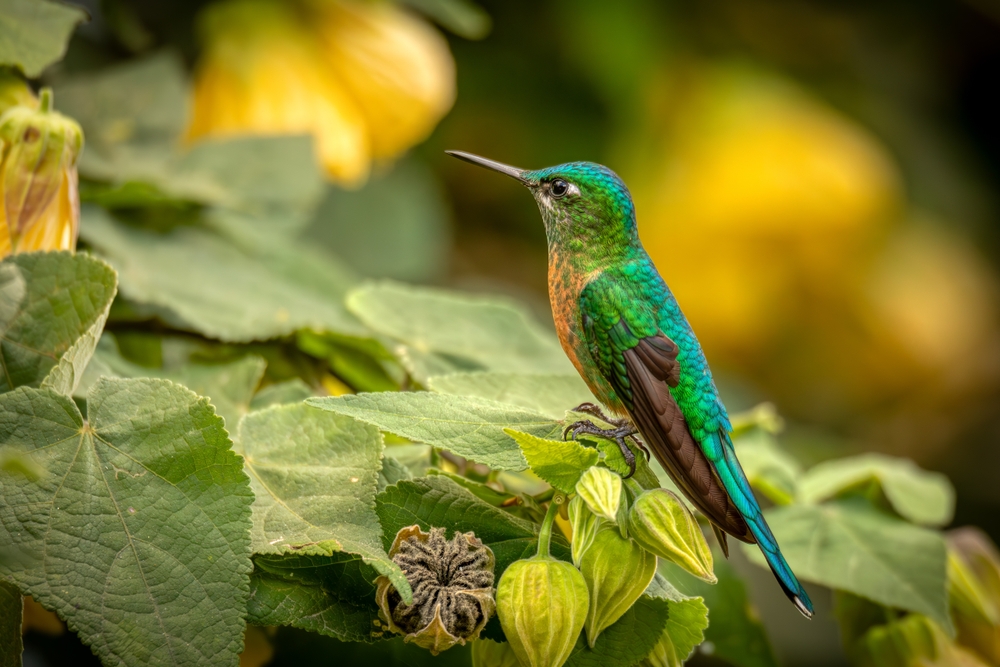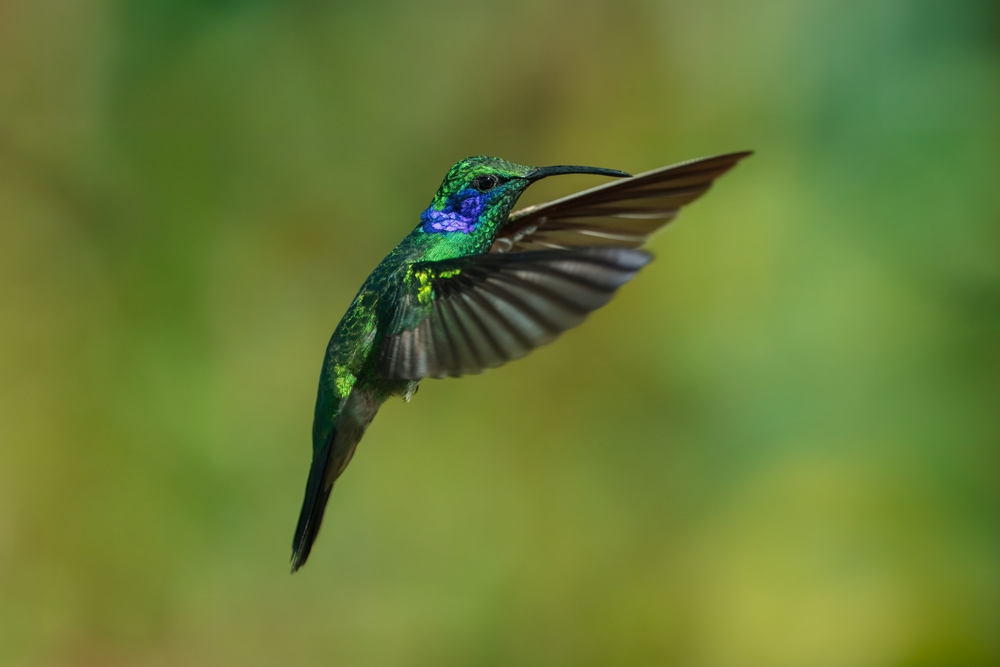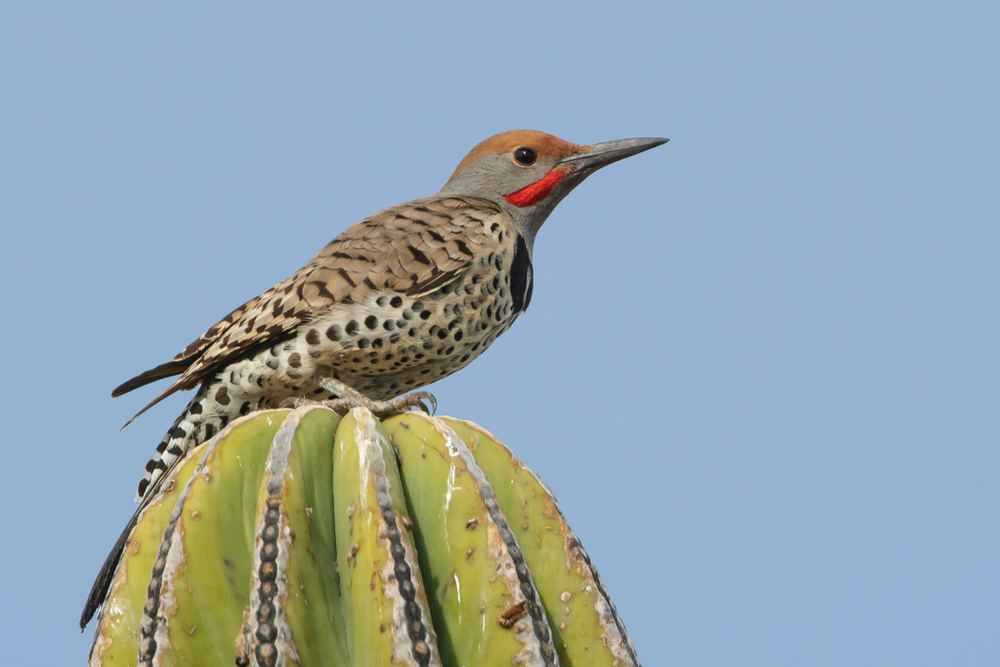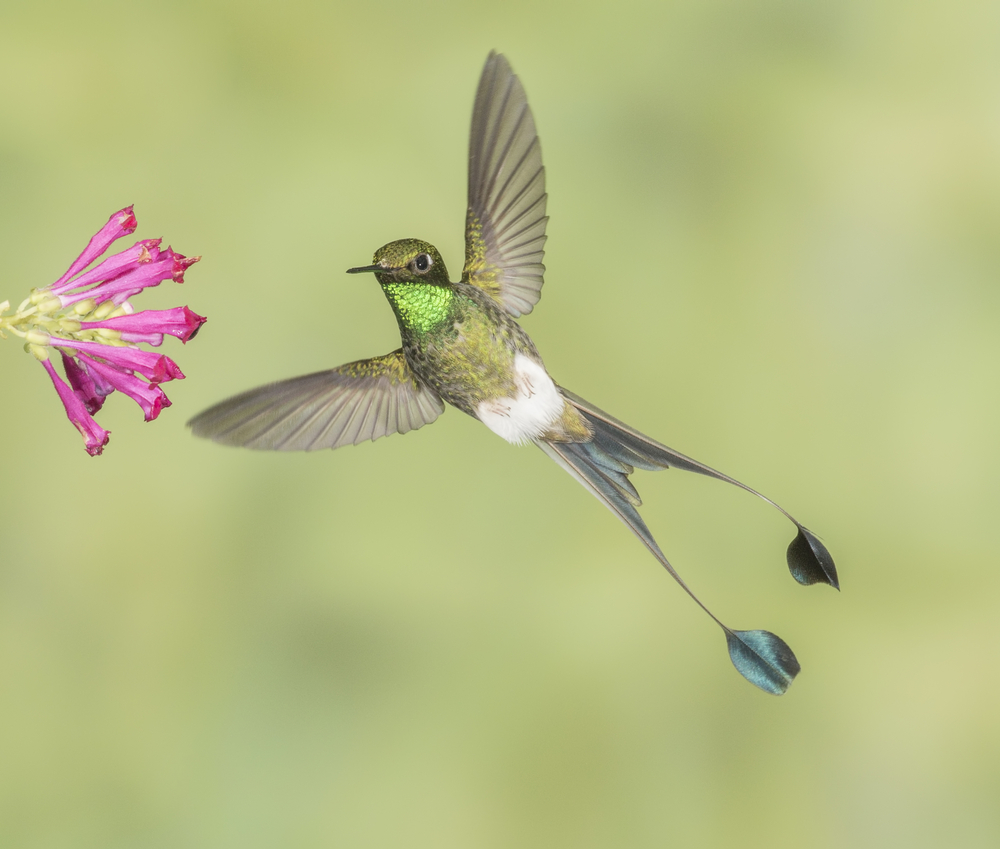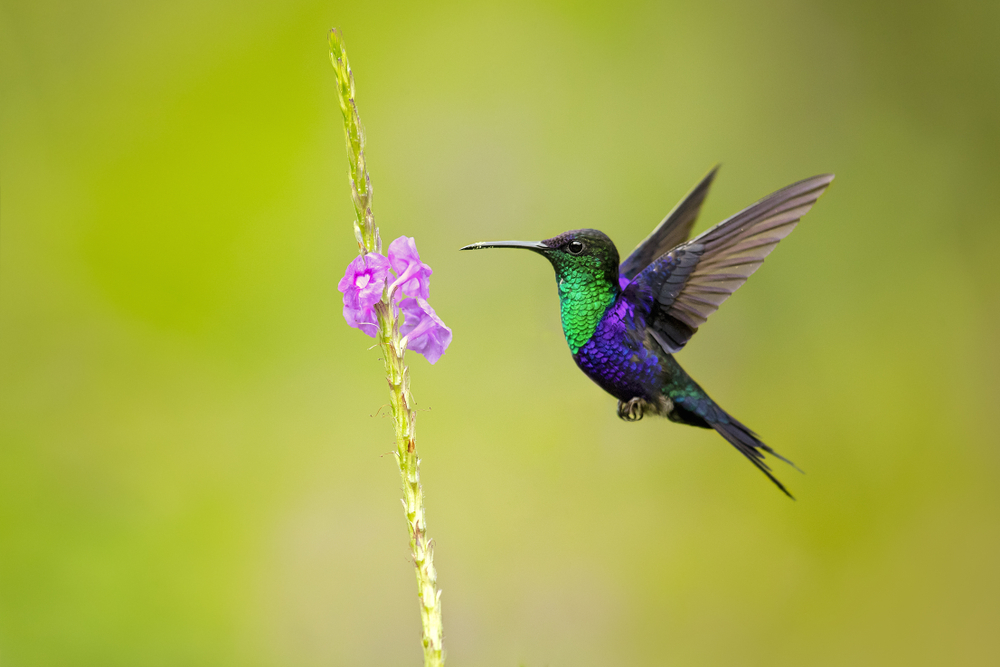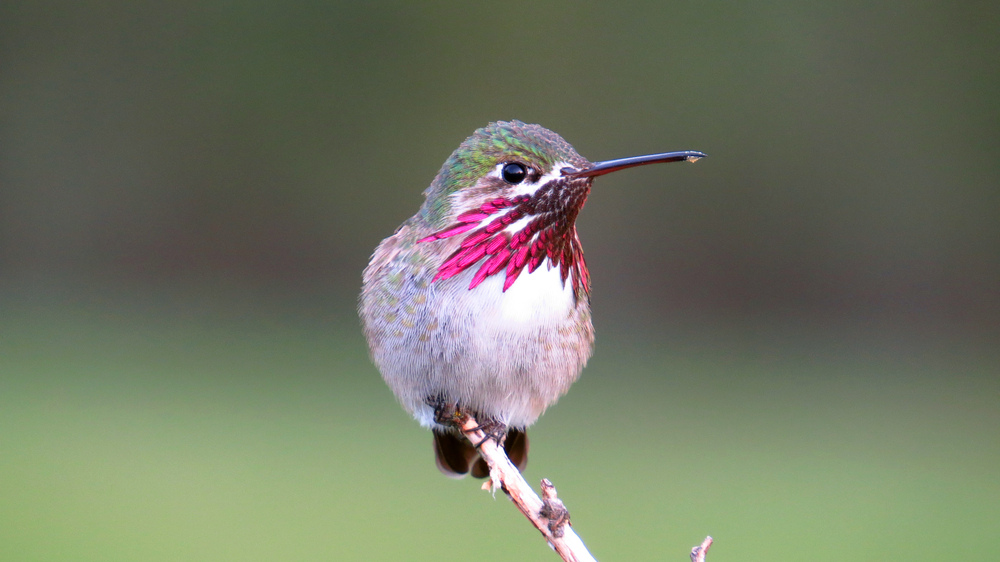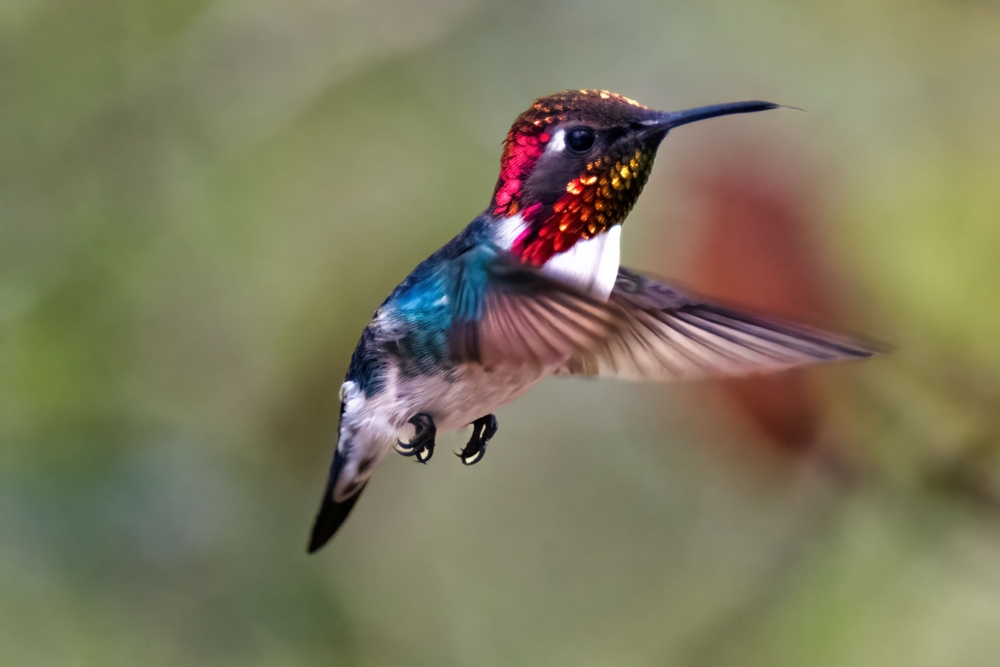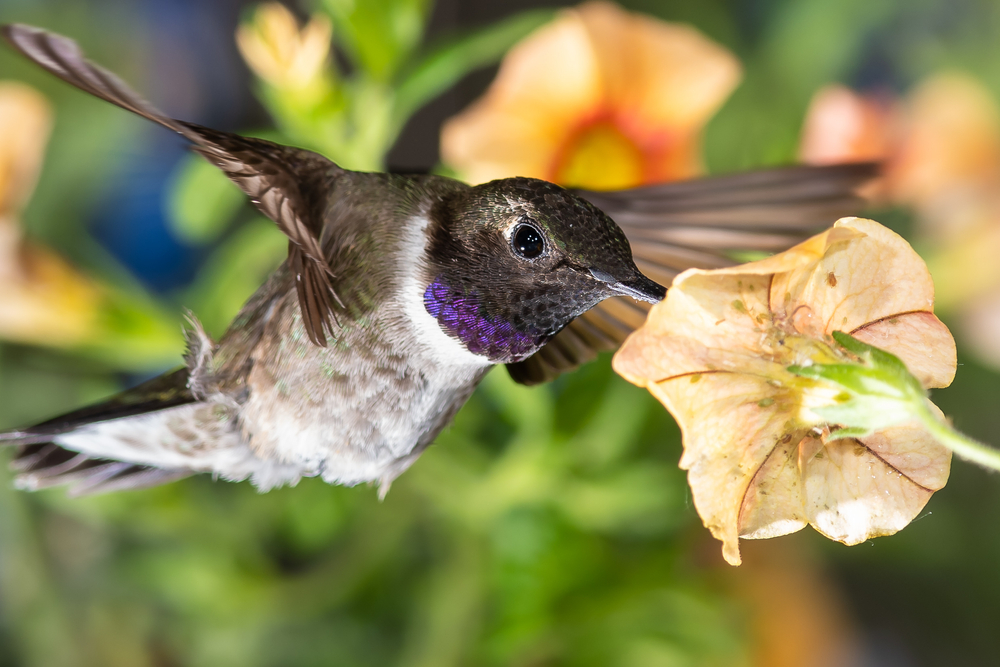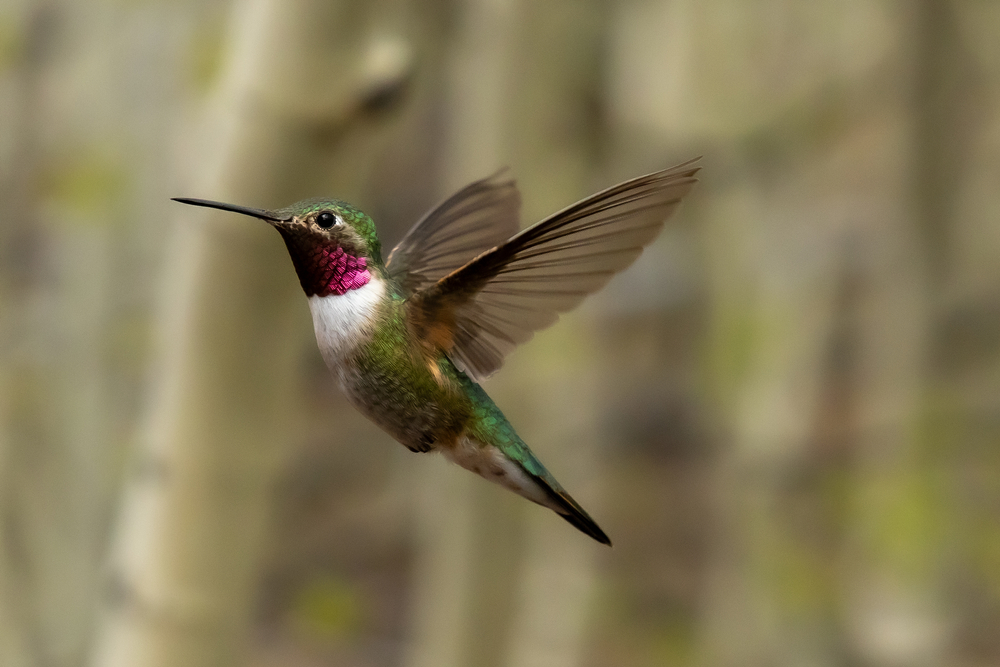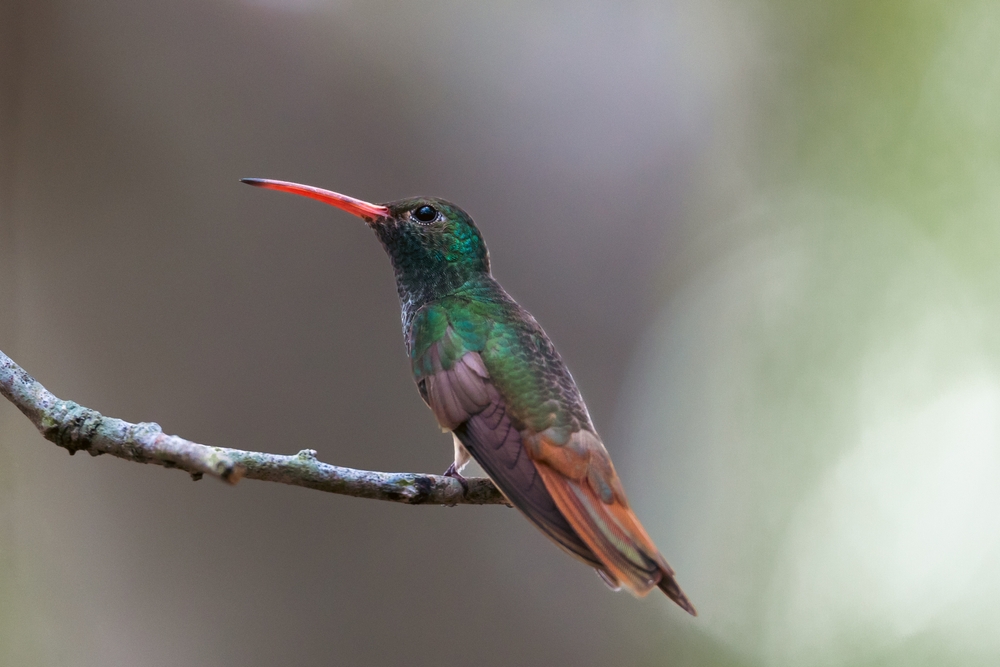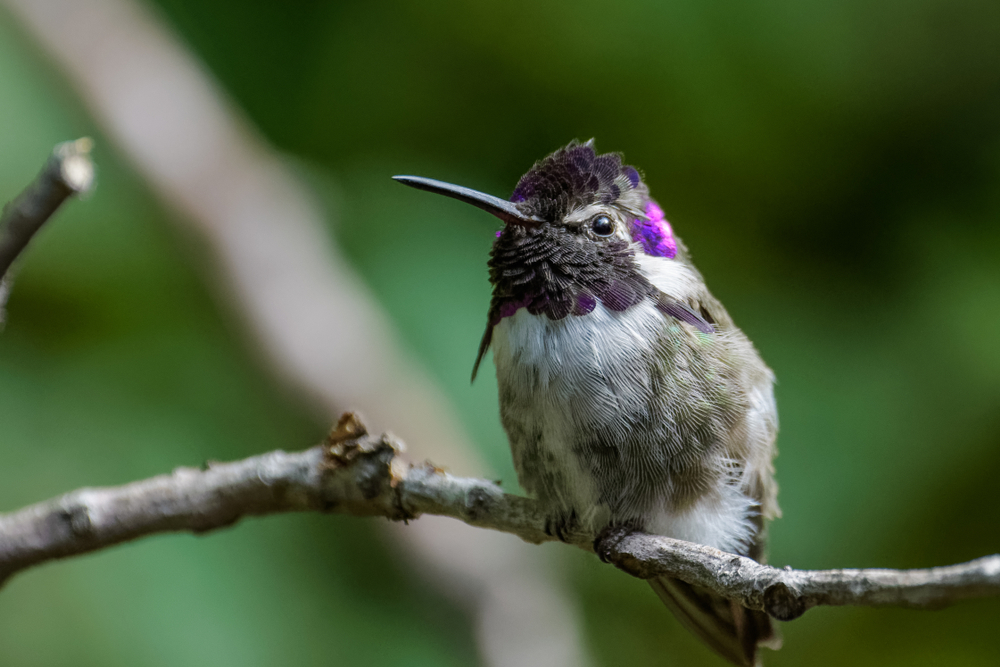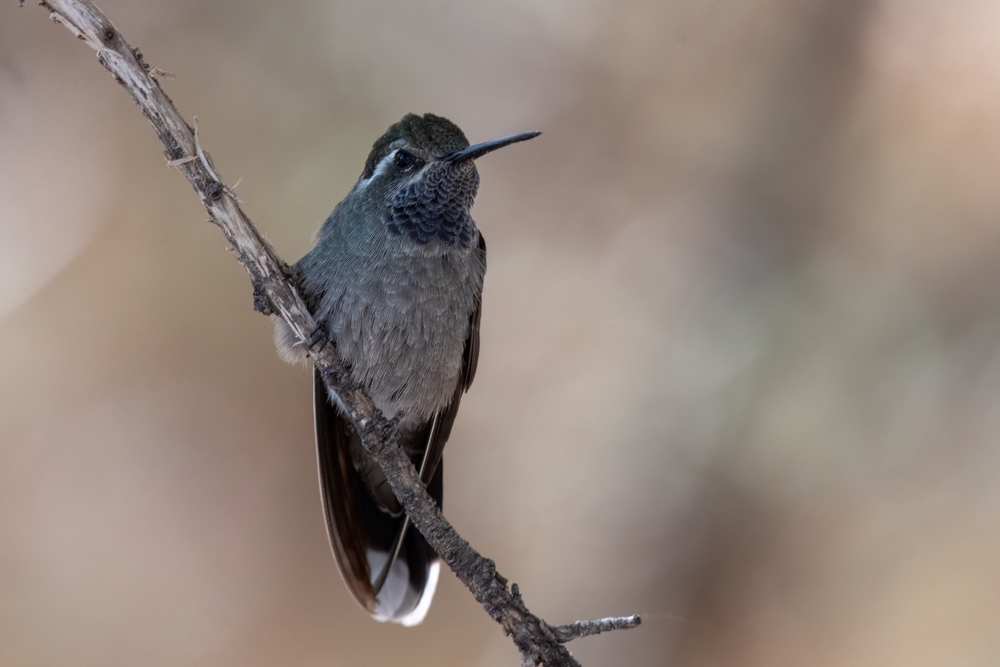The Magnificent Hummingbird (Eugenes fulgens, now more often called Rivoli’s Hummingbird) is most closely related to the Talamanca Hummingbird (Eugenes spectabilis) of Costa Rica and Panama, which was once considered the same species but is now recognized as distinct.
About
The Magnificent Hummingbird (Eugenes fulgens), now often split by taxonomists into the Rivoli’s Hummingbird(Eugenes fulgens) of North America and the Talamanca Hummingbird (Eugenes spectabilis) of Central America, is one of the largest and most striking members of the family Trochilidae. It inhabits montane forests, canyons, and cloud forests from the southwestern United States through Mexico and into Central America, typically at elevations between 2,000 and 3,500 meters (6,500–11,500 ft).
This hummingbird measures 11–14 cm (4.3–5.5 in) in length and weighs 7–10 grams, making it nearly twice the size of many other North American hummingbirds. Males are particularly breathtaking, with an iridescent violet crown, emerald-green throat, and dark green body that shimmers in sunlight. Their large size, long bill, and slightly notched tail add to their commanding presence. Females are less vibrant, generally grayish below with green upperparts, but still elegant.
The Magnificent Hummingbird feeds on nectar from a wide variety of mountain flowers, including agaves, salvias, and other tubular blooms. Its long bill and powerful wings allow it to reach high-energy food sources even in challenging mountain habitats. It also consumes insects and spiders for protein, capturing them in flight or gleaning from foliage.
During breeding season, males establish territories and display by perching prominently and chasing rivals. Their wings produce a distinct metallic sound during flight. Females are responsible for nest construction, weaving tiny cup-shaped nests of plant fibers and spider silk camouflaged with moss and lichen. Two small white eggs are laid, and the female alone tends to incubation and chick-rearing.
Though populations are stable, the species relies on intact montane forests, making conservation of highland habitats critical. Its large size, brilliant colors, and mountain presence make the Magnificent Hummingbird one of the most awe-inspiring hummingbirds of the Americas.
Physical Characteristics
Plumage:
The Magnificent Hummingbird (Eugenes fulgens, often called Rivoli’s Hummingbird) is one of the largest and most dazzling hummingbirds found in North America.
-
Male: Strikingly iridescent with a brilliant metallic green body, a violet-purple crown, and a shimmering turquoise-green gorget (throat patch). The back is bronze-green, wings dusky, and the tail is long and dark with a faint bluish sheen.
-
Female: Much duller, with green upperparts and grayish underparts, lacking the male’s glittering crown and gorget.
Head:
The male’s violet crown and glowing turquoise gorget flash dramatically in sunlight, creating a jewel-like appearance. The bill is long, straight, and black, adapted for deep tubular flowers.
Body:
Large and stocky compared to most hummingbirds, with broad wings and a powerful build. Males often appear darker in shade but blaze with color when sunlight strikes at the right angle.
Size:
-
Length: 4.3–5.5 in (11–14 cm)
-
Wingspan: About 6.5–7.1 in (16.5–18 cm)
-
Weight: 0.21–0.35 oz (6–10 g) – nearly twice the weight of many smaller hummingbirds.
Feet & Tail:
Feet are small and used only for perching. The tail is relatively long, dark, and slightly forked, aiding in balance during hovering.
Flight Style:
With wingbeats slower than tiny hummingbirds (around 20–25 beats per second), Rivoli’s Hummingbird has a deep, thrumming wing sound. Its flight is strong and direct, with males often seen hovering high to guard territories.
The Magnificent (Rivoli’s) Hummingbird’s large size, brilliant turquoise gorget, and violet crown make it one of the most impressive and unmistakable hummingbirds of the southwestern U.S., Mexico, and Central America.
Reproduction
Breeding Season:
Magnificent Hummingbirds breed mainly in the spring and summer (March through July), timed with peak flower abundance in montane forests of the southwestern U.S., Mexico, and Central America.
Courtship:
-
Males perform hovering displays near females, flashing their violet crown and turquoise gorget in the sunlight.
-
They may also chase rival males in aerial dogfights, guarding feeding territories aggressively.
-
As with most hummingbirds, males do not assist in nesting or chick-rearing.
Nesting:
-
The female alone builds the nest, usually placed 6–20 ft (2–6 m) above ground on horizontal branches of pine, oak, or fir trees.
-
Nests are cup-shaped, about 2 in (5 cm) across, constructed of plant down, moss, and spider silk, camouflaged with lichens and bark flakes.
-
The elasticity of spider silk allows the nest to expand as chicks grow.
Eggs:
-
A typical clutch contains 2 small white eggs, each about the size of a pea (~0.5 in / 1.3 cm long).
Incubation:
-
Lasts 15 to 19 days.
-
Only the female incubates.
Chick Development:
-
Chicks hatch blind, featherless, and helpless (altricial).
-
The female feeds them regurgitated nectar and tiny insects for protein.
-
Nestlings fledge at about 20 to 26 days, but may continue to be fed for another week or two after leaving the nest.
Maturity:
-
Juveniles become independent within weeks of fledging.
-
Sexual maturity is reached at about 1 year of age, when they are capable of breeding.
The Magnificent Hummingbird’s reproduction highlights the female’s solitary role in nesting and chick care, while the male’s energy is invested almost entirely in defense of territories and courtship displays
Lifespan
In the Wild:
Magnificent Hummingbirds typically live 5 to 7 years in their montane forest habitats of the southwestern U.S., Mexico, and Central America. As with other hummingbirds, many do not survive their first year due to predation or the challenges of migration.
In Captivity:
Rarely kept outside of research or rehabilitation, but in protected care they may live longer, up to 9 to 10 years, with consistent food and absence of predators.
Record Lifespan:
The oldest recorded Magnificent (Rivoli’s) Hummingbird, documented through banding studies, lived at least 11 years, which is exceptionally long for a hummingbird.
Threats to Longevity:
-
Predation: At risk from hawks, kestrels, snakes, jays, and domestic cats.
-
Habitat Loss: Dependence on pine-oak and montane forests makes them vulnerable to logging and land conversion.
-
Climate Change: Alters flowering cycles and insect availability, affecting food resources.
-
Competition: Other large hummingbirds, such as Blue-throated Mountain-gems, may displace them from nectar-rich feeding territories.
Despite these risks, their larger body size compared to many hummingbirds contributes to their relatively long lifespan, making them one of the more enduring species in the hummingbird family.
Eating Habits
Diet:
The Magnificent Hummingbird feeds on a combination of:
-
Nectar: Its primary energy source, taken from deep tubular flowers such as agave, penstemon, fuchsia, and columbine.
-
Insects & Spiders: Tiny flies, gnats, aphids, and small spiders provide essential protein, especially for breeding females and growing chicks.
-
Sap: Occasionally drinks from sap wells created by sapsuckers, feeding on both sap and trapped insects.
Foraging Behavior:
-
Uses its long, straight bill and extendable, brush-tipped tongue to lap nectar at 10–13 licks per second.
-
Often forages in montane forests and highland clearings, visiting both native wildflowers and garden plants.
-
Unlike many small hummingbirds that follow “traplines,” males often establish feeding territories, aggressively defending flower patches or feeders.
-
Supplements nectar with aerial insect-catching (hawking) and gleaning arthropods from foliage and webs.
Feeding Adaptations:
-
Large body size allows it to dominate smaller hummingbirds at feeders and flowering plants.
-
Wingbeats are slower than smaller species (~20–25 per second), producing a deep thrumming sound instead of the higher-pitched hum of tinier hummingbirds.
-
Can enter torpor during cold highland nights, conserving energy when nectar is limited.
Role in Ecosystem:
As a pollinator, the Magnificent Hummingbird plays a crucial role in highland ecosystems, transferring pollen between mountain flowers. Its insect-hunting also contributes to natural pest control.
The Magnificent Hummingbird’s deep wingbeats, territorial dominance, and dual role as pollinator and insect predator make it one of the most important hummingbirds of montane forests.
Uniqueness
One of the Largest North American Hummingbirds:
At nearly 5.5 in (14 cm) long and weighing up to 10 g, it is one of the largest hummingbird species north of Mexico, towering over smaller species like the Calliope or Ruby-throated.
Brilliant Iridescence:
Males display a violet-purple crown and a shimmering turquoise-green gorget, which glow like jewels in sunlight but appear dark in shade, giving them a dramatic, shifting appearance.
Deep Wingbeat Sound:
Unlike the high-pitched hum of smaller species, their slower (~20–25 per second) wingbeats produce a deep thrumming sound, easily recognized in the field.
Montane Specialist:
They are closely tied to pine-oak and montane forests of the southwestern U.S., Mexico, and Central America, often found at higher elevations than most hummingbirds.
Territorial Dominance:
Their large size allows them to dominate flower patches and feeders, often displacing smaller hummingbirds.
Name Change:
Formerly known as the Magnificent Hummingbird, the species was officially renamed Rivoli’s Hummingbird to reflect taxonomic revisions, though both names are still widely used.
The Magnificent (Rivoli’s) Hummingbird’s exceptional size, glowing jewel-like colors, deep wingbeat sound, and montane lifestyle make it one of the most unique and awe-inspiring hummingbirds in North America.
Be the First to Share Photos of This Species.
FAQ’s
1. What is the closest species to the Magnificent Hummingbird?
2. How does the Magnificent Hummingbird compare to other hummingbirds?
It is much larger than most hummingbirds found in North America, with males nearly twice the size of a Ruby-throated Hummingbird. It is also unique for its violet crown, turquoise gorget, and deep wingbeat sound, making it both visually and acoustically distinctive.
3. What national parks provide the best opportunities to see a Magnificent Hummingbird?
In the United States, they are best seen in Big Bend National Park (Texas) and Chiricahua National Monument (Arizona). In Mexico, excellent viewing occurs in El Triunfo Biosphere Reserve and other highland forests where pine-oak habitats dominate.




































































